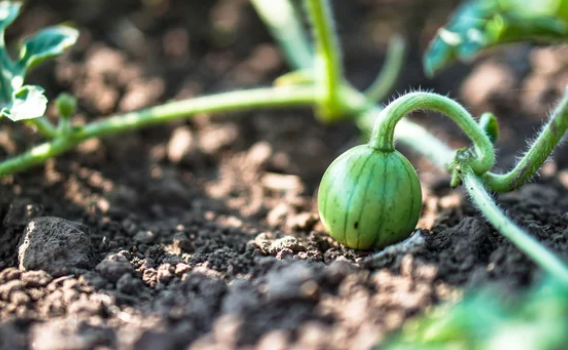Watermelon is a popular and delicious fruit that is enjoyed by many people in the summer months.
If you’re a fan of watermelon and want to try growing your own, you may be surprised to learn that it’s not as difficult as you may think.
Growing watermelons from seed is an easy and fun process that you can do in your own backyard. In this blog post, we will go over the basics of growing watermelons from seed.
Choosing the Right Seeds

The first step in growing watermelons from seed is to choose the right seeds. When choosing seeds, it’s important to select a variety that will grow well in your area. You can find this information on the seed packet or by asking at a local garden center. Once you have chosen the right seeds, it’s time to get started.
Starting the Seeds Indoors
Watermelons are usually started indoors, as they need a long growing season to mature properly. To start the seeds indoors, fill a seed tray or individual pots with seed-starting soil and moisten the soil. Then, place two or three seeds in each cell or pot and cover them with soil. Place the tray or pots in a warm place and keep the soil moist until the seeds germinate.
Transplanting the Seedlings
Once the seedlings have emerged, it’s time to transplant them into your garden or larger pots. It is ideal to choose a sunny spot in your home or yard garden that has well-drained soil. Make sure the soil temperature is at least 60°F before transplanting the seedlings. Space the seedlings about two feet apart and water them well after transplanting.
Caring for Watermelon Seedlings
Watermelons require a lot of water, especially during hot weather. Make sure to water your seedlings regularly and keep the soil moist. Apply a balanced fertilizer every two weeks to keep the seedlings growing strong.
Harvesting the Watermelons

Watermelons will take about 90-100 days to mature, depending on the variety. To determine when a watermelon is ready to harvest, look for the following signs: the stem near the fruit will turn brown, the fruit will stop growing, and the fruit will have dull skin. To harvest the watermelon, cut it from the vine with a sharp knife, leaving a stem of about two inches.
The Importance of Proper Soil Preparation
Watermelons need well-drained soil that is rich in organic matter. Before planting, make sure to prepare the soil by adding compost or other organic matter. This will help to improve the soil structure and provide the necessary nutrients for the seedlings to thrive.
How to Provide Proper Support
Watermelons can get quite heavy as they mature, so they will need proper support to prevent them from breaking the vines. This can be done by using stakes, trellises, or cages to support the vines as they grow.
Pest and Disease Management
Watermelons can be susceptible to various pests and diseases, such as squash bugs, cucumber beetles, powdery mildew, and mosaic virus. To prevent these problems, it’s important to keep the garden area clean, remove any infected plants immediately, and practice proper crop rotation.
Tips for Growing Watermelons in Containers
Growing watermelons in containers is a great option for those who have limited garden space. To grow watermelons in containers, choose a container that is at least 15 gallons in size, and fill it with well-drained soil. Make sure to place the container in a sunny location and water regularly.
Conclusion
Growing watermelons from seed is a fun and rewarding experience that can be done by anyone, even if you have limited garden space. By following these simple tips and guidelines, you can enjoy a bountiful harvest of fresh and delicious watermelons in no time. So, get started today and see the results of your hard work come to fruition!




